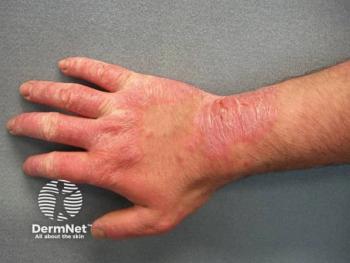
Evidence Highlights Thiamidol’s Efficacy and Safety in Hyperpigmentation Treatment
Key Takeaways
- Thiamidol, a potent tyrosinase inhibitor, effectively treats various hyperpigmentation disorders, outperforming traditional agents like hydroquinone.
- Clinical trials showed significant melanin reduction and visible improvements in hyperpigmentation within four weeks, with sustained benefits post-treatment.
Thiamidol emerges as a promising treatment for hyperpigmentation, showcasing superior efficacy and safety compared to traditional options like hydroquinone.
A recent poster presentation at the
The review reported that thiamidol significantly reduced hyperpigmentation symptoms with high safety and tolerability, outperforming traditional compounds like hydroquinone.
Background and Methods
Emerging treatments for hyperpigmentation and disorders of pigmentation focus primarily on targeting the molecular roots of melanin overproduction.2 Given that overactivity of enzyme tyrosinase results in hyperpigmentation, researchers have begun to explore the identification of potent inhibitors of tyrosinase with favorable safety profiles.3
Thiamidol, an isobutylamido thiazolyl resorcinol compound, was identified through a literature review and screening of over 50,000 molecules as the most potent reversible human tyrosinase inhibitor.
Multiple clinical trials enrolled patients with mild to severe hyperpigmentation, including melasma, post-inflammatory hyperpigmentation, and solar lentigines. Participants applied a regimen including thiamidol-based serum and SPF 30 day cream, twice daily, over periods ranging from 12 to 20 weeks. Evaluation tools included the Melasma Area and Severity Index (MASI), the modified Griffiths’ hyperpigmentation score, and digital photographic assessments.
Findings
Thiamidol demonstrated significant inhibitory capacity, with an IC50 of approximately 1.1 µmol/L, superior to hydroquinone’s values exceeding 4000 µmol/L. The average melanin reduction in skin models was close to 100%, significantly higher than other tested agents, including kojic acid and arbutin.
Patients treated with thiamidol exhibited notable improvements as early as 4 weeks, with continued progress through week 12. The mean MESA (Modified MASI) scores showed statistically significant reductions at week 12 with mean changes from baseline ranging between approximately -2.5 to -3.0 points.
Digital imaging confirmed visible lightening of hyperpigmented areas, with illustrative before-and-after images confirming clinical improvement. A majority of study participants rated their hyperpigmentation as improved, with high satisfaction reported.
No serious adverse effects were reported, though minor transient skin irritation was infrequent.
After concluding treatment, researchers observed a regression in some hyperpigmentation, but levels remained significantly lower than baseline, indicating sustained benefit.
Conclusions
The data presented at highlights thiamidol’s high efficacy in reducing hyperpigmentation, a safe profile suitable for OTC uses, and consistency across diverse skin types and severity levels.
The study may have been limited by a maximum of 20 weeks duration of follow-up. Additionally, real-world adherence and variations in skin care routines could influence outcomes outside the clinical trial environment.
Moving forward, further research is warranted to explore thiamidol’s long-term effects, optimal concentrations, and potential combination therapies.
References
- Desai SR, Alexis A, Baldwin H, et al. Thiamidol: a breakthrough innovation in treatment of hyperpigmentation. Poster presented at the 2025 Music City SCALE meeting; May 14-18, 2025; Nashville, Tennessee.
- Thawabteh AM, Jibreen A, Karaman D, Thawabteh A, Karaman R. Skin pigmentation types, causes and treatment-a review. Molecules. 2023;28(12):4839. Published 2023 Jun 18.
doi:10.3390/molecules28124839 - Namiecińska E, Jaszczak J, Hikisz P, Daśko M, Woźniczka M, Budzisz E. Evaluation of tyrosinase inhibitory activity of carbathioamidopyrazoles and their potential application in cosmetic products and melanoma treatment. Int J Mol Sci. 2025;26(8):3882. Published 2025 Apr 19.
doi:10.3390/ijms26083882
Newsletter
Like what you’re reading? Subscribe to Dermatology Times for weekly updates on therapies, innovations, and real-world practice tips.



















